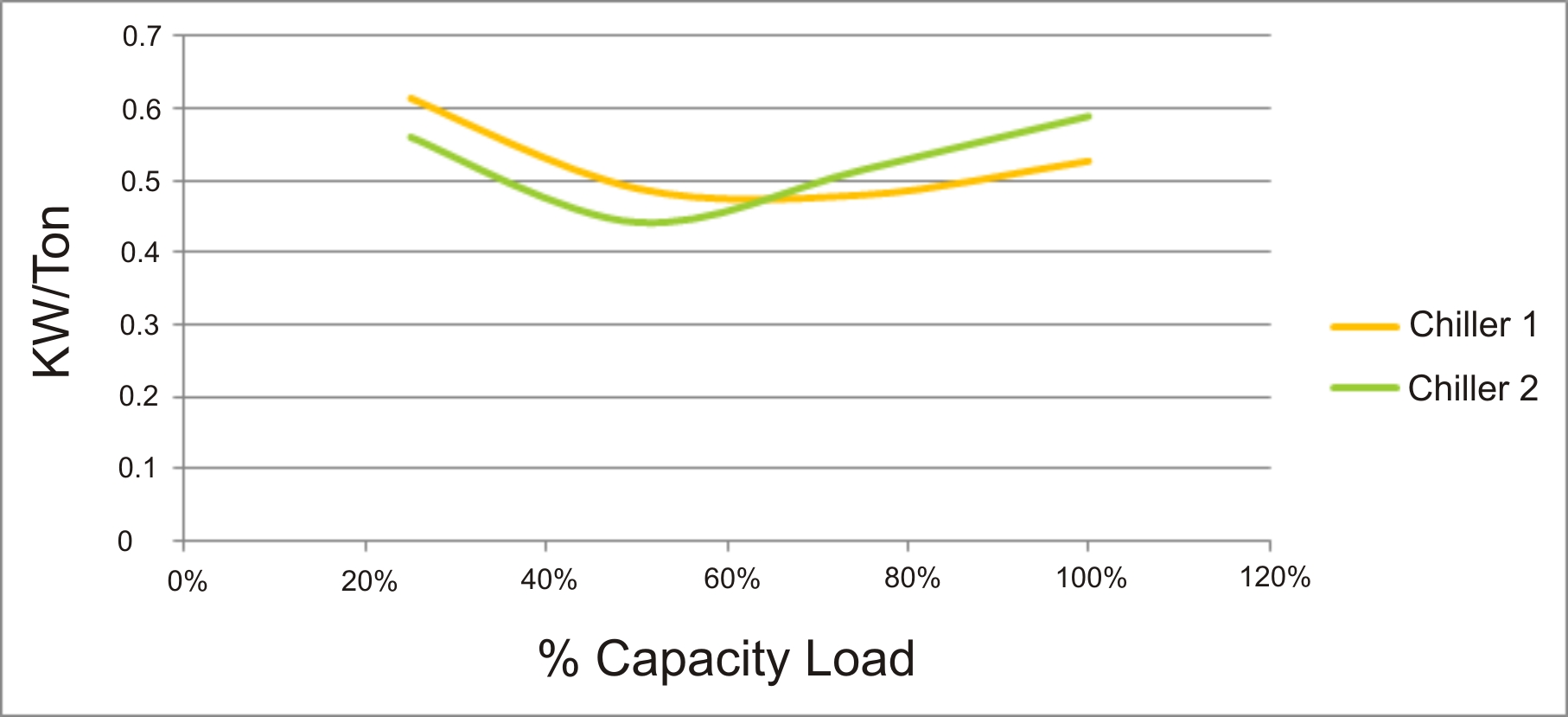
The Sales Pitch
So, its time to buy a new chiller. The old one is draining the bank account for periodic repairs. The contractor has narrowed down the immense number of choices to a select few that meet the specific needs of the customer. In fact, the contractor has narrowed down the choices to two ideal chillers, identical in every way, except price and efficiency. Which is the best option? The more expensive efficient one or the less expensive less efficient one? Well, energy is money, so go with the more efficient one. The problem is, which one is more efficient? Chiller 1 or chiller 2?
Chiller Efficiency – What is it?
Chiller efficiency is typically rated at both the “rated (full load) efficiency” and the IPLV (Integrated Part Load Value), which can be listed in COP[1], EER[2], or kW/ton[3]. These numbers can be quite useful, but do they really indicate which chiller is the most efficient? In the two real cases in the table, chiller 1 looks more efficient in terms of the full load COP, while chiller 2 looks more efficient in terms of IPLV. Often times it’s obvious that one chiller is more efficient than another, but sometimes it depends entirely on the individual chiller’s performance curve and the loading of the chiller.
Select the Best Chiller for the Application
When determining the efficiency of chillers, it’s important to look at capacity and usage. As shown in the chart, chiller 1 is a more efficient option if the application requires more than 65% capacity load, and chiller 2 is the better option if less than 65% is required. Chiller 1 may be a better option for HVAC purposes in Chicago, saving nearly $400 per year, but if installed for the same purpose in Honolulu, it could actually COST over $5,000 more per year. The savings could be reversed in both of these situations if the loading is different, for instance, if there are two chillers that are both used to meet the cooling demands at peak loads. For this reason, knowing capacity and usage is an important step in choosing the most efficient chiller for the application.
Conclusion
Buying a chiller is a complicated process. It’s not uncommon to see more expensive chillers with higher part load efficiencies and lower full load efficiencies and less expensive chillers with lower part load efficiencies and higher full load efficiencies. The key is to buy the chiller that best fits the application and loading profile. Choosing the less expensive chiller will save money on the front end, and in some cases will save money every year thereafter.
[1] Coefficient of Performance – The ratio of cooling provided to the electrical energy consumed
[2] Energy Efficiency Ratio – The ratio of cooling provided to the electrical energy consumed (EER = 3.41 × COP)
[3] The power consumed per ton of cooling provided




